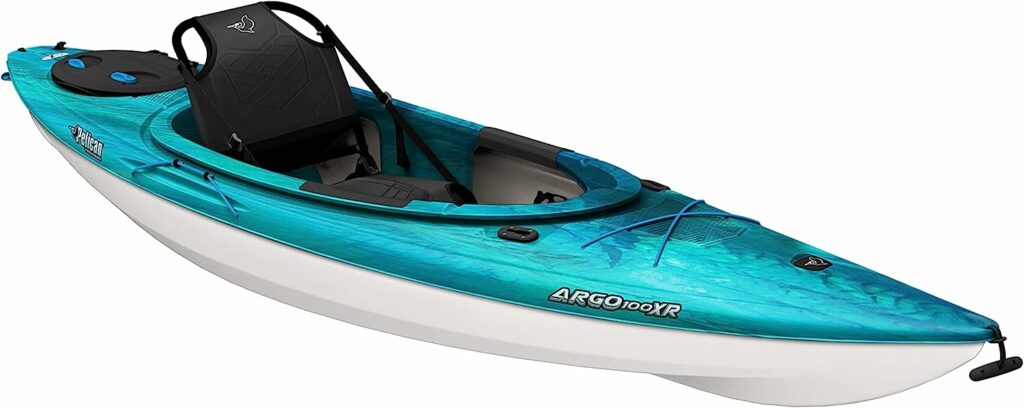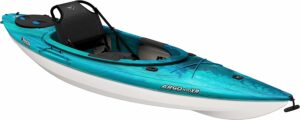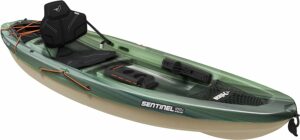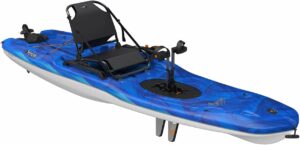The Ultimate Guide to Choosing the Best Lightweight Kayak for Your Adventure
Introduction:
Regarding kayaking, having the right equipment can significantly enhance your overall experience.
One crucial factor to consider is the weight of the kayak.
A lightweight kayak offers numerous benefits, including ease of transportation, maneuverability, and reduced fatigue during long paddling trips.
In this comprehensive guide, we will delve into the world of lightweight kayaks, exploring different types, key considerations, and essential features to help you make an informed decision for your next adventure.
Provo Green Products is your reliable source for discovering sustainable products that positively impact your life and the environment.
With extensive experience in manufacturing, trades, and construction, Provo Green Products thoroughly researches each product before providing accurate and up-to-date information on its sustainability.
You can trust that you’re getting trustworthy insights to make informed choices whether you’re looking for solar products, electric bikes, eco-friendly products, renewable energy solutions, etc.
Provo Green Products is your go-to destination for finding the right green products for your lifestyle.
Disclosure: We may earn a small commission if you click on one of our links.
This does not affect the pricing of the product whatsoever.
Understanding Lightweight Kayaks:
Before diving into the selection process, it’s essential to understand what makes a kayak lightweight.
Generally, a lightweight kayak is constructed using lightweight materials such as fiberglass, carbon fiber, or even inflatable options.
These materials provide durability while significantly reducing the overall weight of the kayak.
The primary advantage of a lightweight kayak lies in its portability and ease of handling both on and off the water.
Types of Lightweight Kayaks:
Various lightweight kayaks are available in the market, each designed to cater to specific needs and preferences.
Recreational kayaks are ideal for calm waters and casual paddling.
Touring kayaks are designed for longer trips and provide additional storage space.
Fishing kayaks are equipped with features such as rod holders and storage compartments for anglers.
Whitewater kayaks are built to withstand the challenges of fast-moving rapids.
Understanding the different types will help you narrow your options based on the adventure you seek.
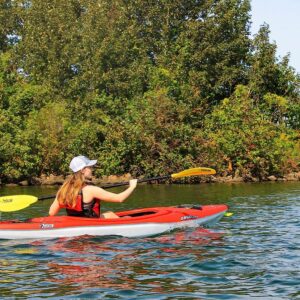
Considerations for Different Water Environments:
The type of water environment you plan to explore plays a significant role in selecting the right lightweight kayak.
For calm lakes and ponds, a stable and maneuverable kayak is essential.
Slow-moving rivers may require a kayak with good tracking capabilities.
Coastal waters and open seas demand a kayak with superior stability and a design that can handle waves and currents.
Whitewater kayaking calls for a kayak specifically built to withstand the demands of rapid descents.
Consider the water conditions you will encounter to ensure your chosen kayak suits the environment.
Choosing the Right Size and Weight:
Size and weight are crucial factors to consider when selecting a lightweight kayak.
The ideal size depends on your body type and intended use.
The kayak should be spacious enough for comfortable seating and legroom yet not too large to hinder maneuverability.
Weight is a crucial consideration for ease of transportation.
A lighter kayak is easier to carry and load onto your vehicle.
Balancing size and weight is essential to ensure optimal performance and convenience.
Materials Used in Lightweight Kayaks:
Lightweight kayaks are typically constructed using materials such as fiberglass, carbon fiber, and inflatable options.
Fiberglass kayaks offer a good balance between weight, durability, and cost.
Carbon fiber kayaks are incredibly lightweight and provide excellent performance but come at a higher price point.
Inflatable kayaks are lightweight and highly portable, making them popular for travelers.
Each material has advantages and disadvantages, so it’s essential to consider factors such as budget, durability, and intended use when choosing the best suited to your needs.

Features and Accessories to Look For:
When selecting a lightweight kayak, it’s essential to consider the features and accessories that enhance your kayaking experience.
Look for comfortable seating options that provide adequate support for long trips.
Storage compartments and hatches are essential for carrying gear, food, and water.
Paddle holders and deck rigging help keep your paddle secure and within reach.
Safety features like flotation devices and rescue lines are crucial for emergencies.
Evaluate the features that align with your preferences and intended kayak use.
Testing and Evaluating Lightweight Kayaks:
Before making a purchase, testing and evaluating different lightweight kayaks is recommended.
Researching online and reading reviews can provide valuable insights, but nothing beats first-hand experience.
Seek out opportunities to try kayaks in person, such as renting from a local kayak shop, attending demo events, or borrowing from friends or fellow kayakers.
Consider factors such as stability, maneuverability, comfort, and overall performance during the test paddling process.
Testing multiple kayaks will give you a better understanding of what works best for your paddling style and preferences.
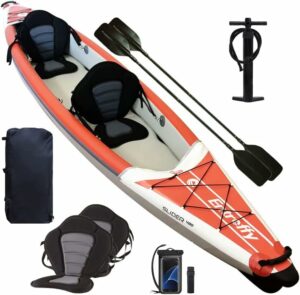
Budget Considerations and Value for Money:
As with any purchase, budget is an essential factor to consider when choosing a lightweight kayak.
Set a realistic budget range based on your financial capabilities and the value you expect to gain from the kayak.
Remember that a higher price sometimes guarantees the best kayak for your needs.
Consider the materials used, including features, durability, and overall quality, when evaluating the value for money.
Investing in a kayak that meets your requirements and offers long-term durability is often worthwhile, even if it means stretching your budget slightly.
Maintenance and Care Tips:
Proper maintenance and care are essential to ensure the longevity and performance of your lightweight kayak.
Regular cleaning and storing your kayak in a dry and protected area will prevent damage and prolong its lifespan.
Inspect your kayak for any signs of wear or damage and address them promptly.
Learn basic kayak repair techniques to fix minor injuries or seek professional assistance for significant repairs.
You can enjoy many seasons of paddling adventures by taking good care of your kayak.

Conclusion:
Choosing the best lightweight kayak for your adventure requires careful consideration of various factors, including the type of kayak, water environment, size and weight, materials used, features, and budget.
By understanding your needs and preferences and evaluating different options, you can find the perfect lightweight kayak that enhances your paddling experience.
Remember to test kayaks in person whenever possible and prioritize value for money over the price tag alone.
With proper maintenance and care, your lightweight kayak will be a reliable companion on countless memorable journeys on the water. Happy paddling!
Stay in Touch!
I’am a dedicated entrepreneur with many years of experience and an integrity-driven individual who is highly motivated to succeed. Leveraging extensive expertise in manufacturing, construction, and various trades, we can provide a solid foundation for sustainable living. Our meticulous research process guarantees that our information about each product is precise and current, allowing you to make informed decisions. A deep understanding of business operations empowers me to consistently implement improvements that result in ongoing success. Visit site.

